Table of contents
Know everything about the Orixás!
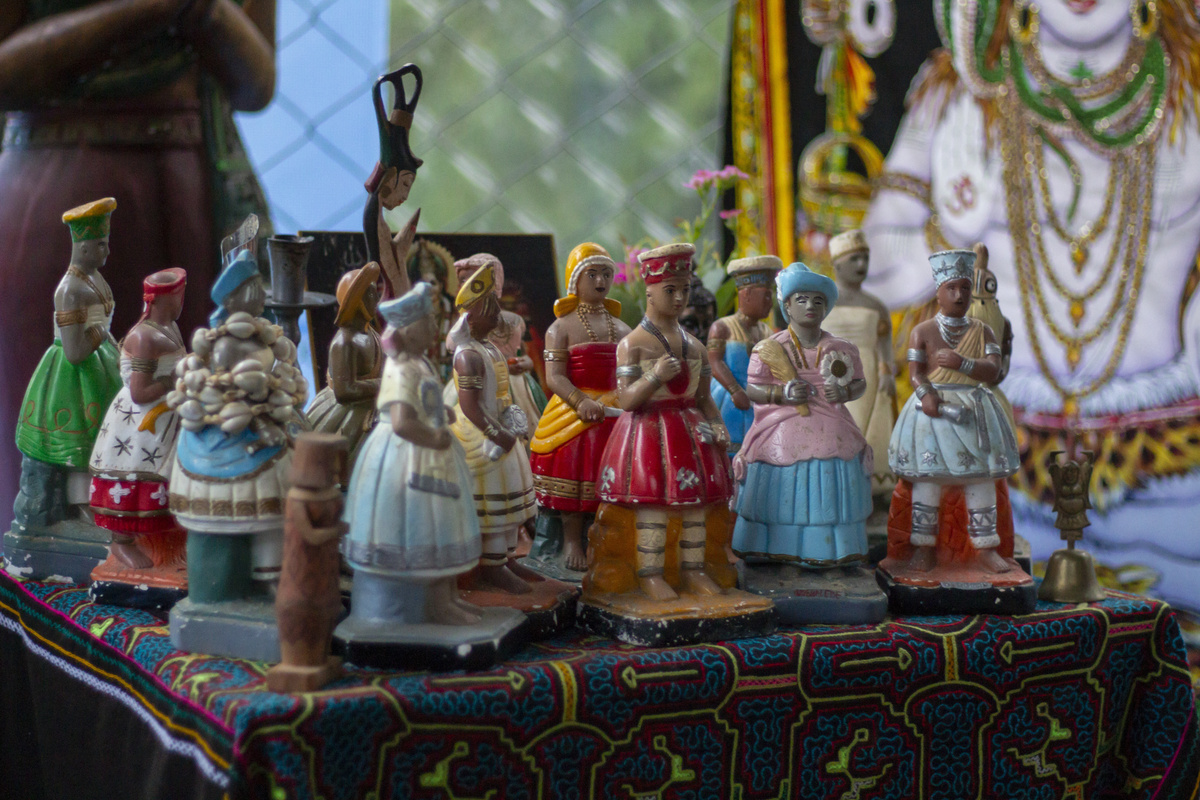
The word Orixá is of African origin and means divinity. These entities were worshipped in the region of Yoruba, in the Southwest of present day Nigeria, Benin and Northern Togo. They were brought to Brazil by enslaved blacks from these areas.
The orixás are divinities that became popular in Brazil with the religions of African matrix, because many blacks brought as slaves were from the Yoruba region. In the African religious system, the orixás represent the strength of the social and family group. They have the function of protection, to facilitate the survival of the group. You'll know all about them in this article. Check it out!
Understanding more about the Orixás
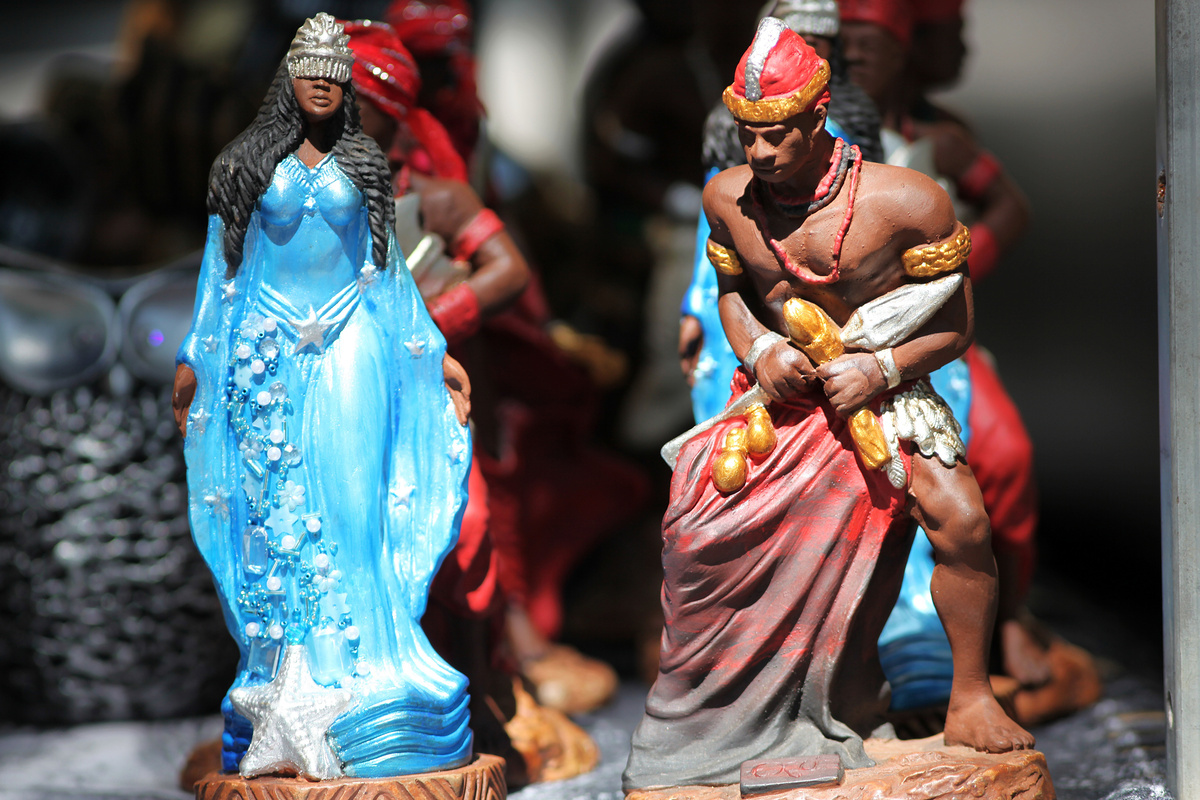
Currently, many Orixás are known and respected in Brazil. However, there is still much prejudice involving the religions of African origin. Follow the topics below to learn all about these deities!
What are the Orixás?
According to tradition, the Orixás are gods that have their origin in African clans. They were divinized more than 5 thousand years ago, and it is said that they were inspired by men and women capable of intervening in the forces of nature.
The power and strength of the Orixás are linked to energies related to the environment. They can positively interfere in the results of harvesting and hunting, in the manufacture of tools, prosperity and protection.
In addition, they use herbs to cure diseases with wisdom and assertiveness. Virtues and defects are present in the personality of these beings, since they have human characteristics. Thus, vanity, jealousy, love and benevolence go together with these deities.
Origin and history
In the beliefs of African origin, the origin of the Orixás is related to the creation of the world itself. Olodumaré, in creating the world, also created primordial energies that would help him to administer his creation.
Within this perspective, the Yoruba creation myth places Oxalá as the Creator. Then, from the creation of the Earth, the primordial Orixás began to inhabit the world and interact with each other, generating their families, friendships and enmities.
It was also in this primary creation that each Orixà was consecrated to a manifestation of nature. These consecrations are related to the ethical and ideological principles that each Orixà carries within.
Orixás and religious syncretism
At the time when Africans arrived in Brazil as slaves, they brought their beliefs and religions with them. However, there was no religious freedom in the country, as the Portuguese colonizers imposed Catholicism as the official religion.
Many punishments were imposed on those who disobeyed these rules. Then, the captives started on their own what we call religious syncretism, which is nothing more than the association of a certain Orixá with one of the Catholic Saints.
Thus, in the cults where there was an altar with Jesus Christ, Mother Mary and Saint George, for example, there were, under the table, hidden by the tablecloth, the images of Oxalá, Iemanjá and Ogum, respectively associated with the saints mentioned.
Orixás in Brazil
In Yoruba mythology, there are more than 400 orixás, and some of them have become very famous in Brazil and are worshiped even by those who do not belong to religions of African origin. Candomblé is the religion brought by Africans of Yoruba origin.
Umbanda was created in Brazil, considering the associations of religious syncretism. It is, therefore, a new religion created in the 20th century. In Yoruba mythology, there are hundreds of orixás, but only some of them are worshiped by the Umbanda and Candomblé religions.
Orixá Exú
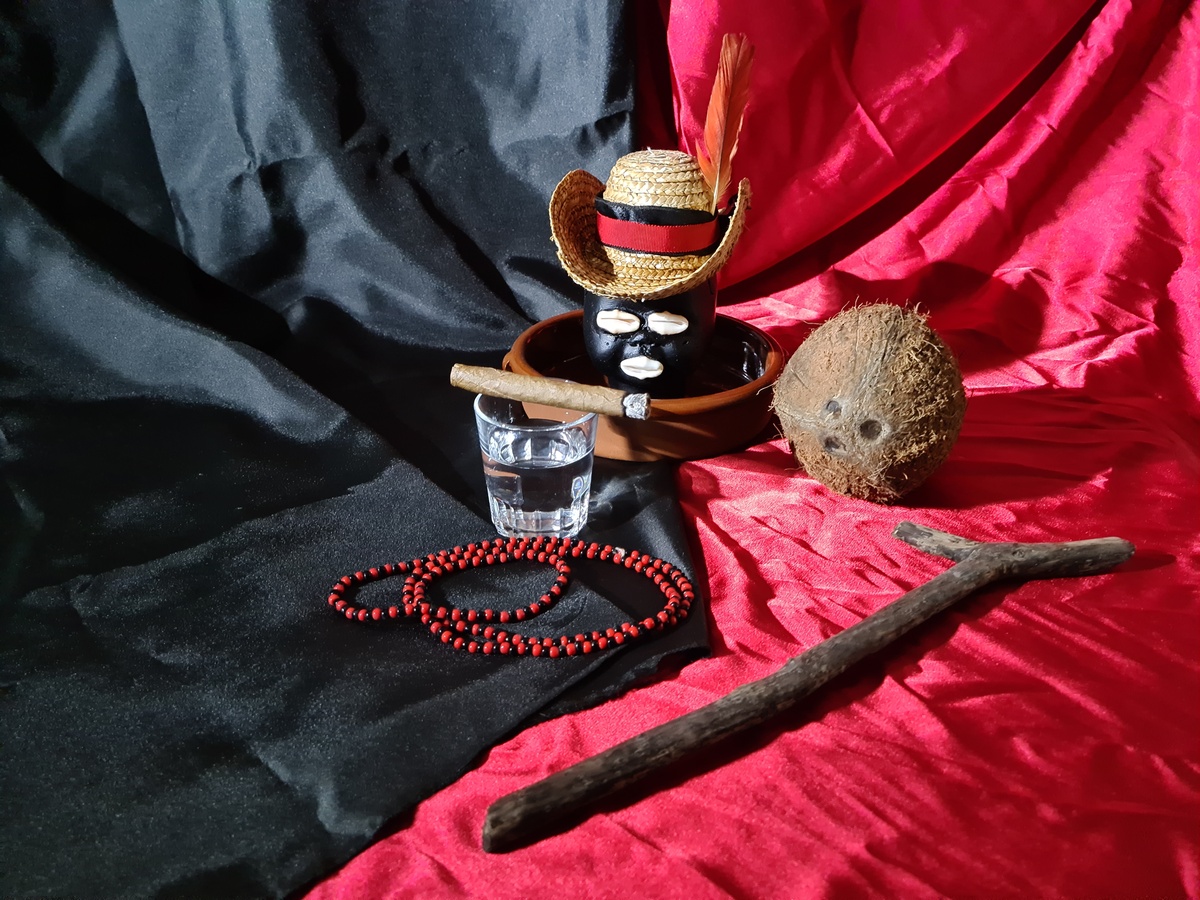
The Orixá Exu is the most polemic entity of Candomblé and Umbanda. Considered by many the personification of the Devil, he is the Guardian who protects us from spells performed by obsessive spirits or by our enemies. Continue reading the article and learn all about him!
Origin and history
The Orixá Exu is considered the messenger between men and the gods. The denomination Exu can be applied to male and female entities. The female ones are designated as Pomba Giras, and are responsible for the relationship between men and the Orixás themselves.
They are of great importance and have acquired a wide dimension in establishing, besides the dialogue between men and gods, the safety and protection of their elect against other inferior spiritual beings.
Many religions consider that no action can be performed without first triggering an Exu, because he will be the one to open the paths, removing all impediments. For this reason, they are associated with the senses, the strength to live, virility and sex.
Visual characteristics
The Exus, generally, have an austere visual aspect. They dress in black, wear capes and top hats, besides objects of power, such as staffs or tridents. However, some Umbanda spiritual houses adopt white for the clothing of all entities.
The female Exu, represented by Pomba Gira, is sexy and usually wears red and black dresses. They are vain and sensual and like rings, necklaces and bracelets.
Still in the line of the Exus, it is important to mention the existence of the entity of the Exu Mirim and Pomba Gira Mirim. They are beings with childish aspect that have already incarnated on Earth and have gone through several trials, until reaching their evolutions.
Symbols and celebrations
One of the best known symbols that represent the Exus is the Ogó. It is a phallic-shaped stick made of wood, which represents the penis. It is adorned with gourds, which make reference to the testicles, and is an instrument of immense power.
Other very common symbols are the tridents, which, if square, belong to the masculine, and those of rounded shape belong to the feminine entities. The celebration of the Exus and Pomba Giras should be monthly, every 7th. However, an important month for the celebrations of these entities is August.
Beliefs and prayer
According to the belief of Umbanda and Candomblé, the Exu is the guardian of the path and can break down barriers, as well as successfully exercise its function as guardian. Prayers are the best ways to connect with these Orixás. Below is a great suggestion:
Orixá Exu, you who are the Orixá Regent of Emptiness, the Orixá Vitalizador, the Orixá Esgotador of human excesses and their vain illusions, help us.
We ask the Lord and the Creator Father Olorum, guide us so that we do not become empty.
Do not allow us to get lost in the duality of life's moments.
Orixá Exu, do not let spiritual and material disturbances undermine our willpower and free will, nor our will to live.
Orixá Exu, Lord of Duality that we see in matter, guide us so that we are not seduced by paths that lead us to evolutionary and consciential paralysis of the darkness of ignorance in which we dive when we become empty of God.
Deliver us from all that turns us away from Our Creator, and turn evil away from us.
And if we are worthy, may we have peace and prosperity, to carry our burden in this incarnation in a milder manner, with the absence of our abysses and negativisms, under Your Guard and Protection.
Amen.
Source:www.wemystic.com.brOrixá Oxalá
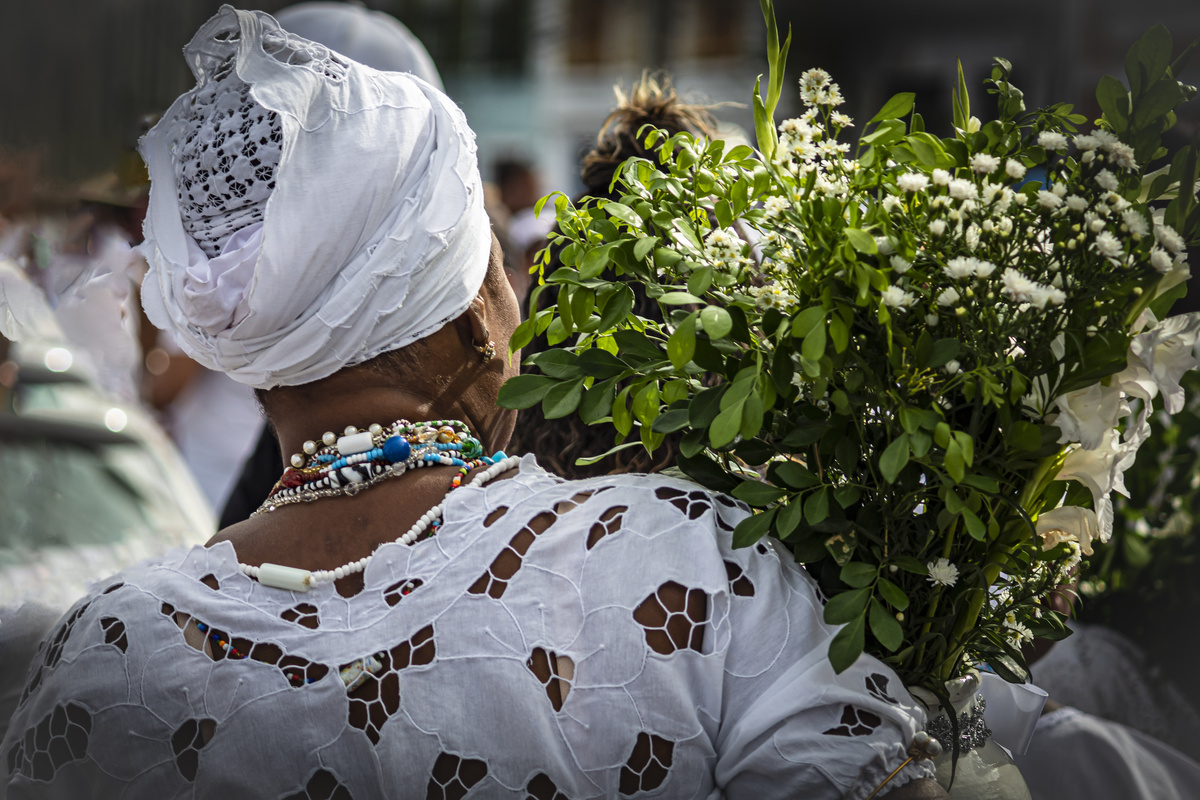
The Orixá Oxalá is one of the most important in the Afro-Brazilian cults. He is the entity that represents the energies of nature creation and personifies the sky. Read on to know all about it!
Origin and history
Oxalá is considered the Orixá of life and the father of all, besides being the greatest Orixá, because the others bow down to him. He is known as the creator of human beings and the world. Thus, in the religions of African matrix, he is equivalent to Jesus Christ.
It manifests itself in our life through faith, peace and love. It is responsible for our physical and mental health, so it is evoked in times of illness, requests for protection and harmonization of any and all afflictive situations.
We should resort to him in situations of anguish and impatience, because, as his main influence is on the mental field, he will help us to keep the necessary balance to solve any situation.
Visual characteristics
Oxalá is often represented by a white dove, which symbolizes peace and conciliation. Other times he may also be represented by a snail, calm and slow. His colors are white and blue, with white predominating.
The young version is called Oxaguiã, represented by the number 8. He is a young warrior who shows bravery, besides using a sword and a shield. He is the one who motivates us, with a fighting spirit and the will to win.
The older version is called Oxalufã, symbolized by the number 10. He is represented by a very calm and slow gentleman, like an old man who feels pain, and uses a metal stick with the image of a bird, the Opaxorô that supports him. He is related to tranquility, peace, wisdom and patience.
Symbols and celebrations
When Oxalá is presented in his young form, the symbols used are the sword, a white metal pestle and a shield. In his old form, Oxalá has as symbol a metal staff called opaxorô.
The young Oxaguiã wears white mixed with blue, and his day of celebration is Friday, while the elderly Oxalufã wears only white, and his day of celebration is Sunday. His annual celebration is December 25.
Beliefs and prayer
In the beliefs of African origin, the Orixá Oxalá is considered the holder of the greatest powers, the one capable of harmonizing any situation, wisely pondering the well-being of all. We can appeal to him to help us open our paths in love. See below:
Epa Babá! Hail Oxalá, the Greatest of Orixás,
divine force of Love, Abnegation and Affection!
Lord of White, Peace and Light,
Remove fear from my life so I can feel, live and see
The strength of true Love opening my paths,
Illuminating my Abode, bringing the Greater Good into my life!
Father Oxalá, you who are Divine Goodness,
Give me a human companion on Earth
So that I may manifest the potency of your Love
Every day of my life.
Epa Baba! Hail your Light and your Mercy!
Source:www.wemystic.com.brOrixá Ogum
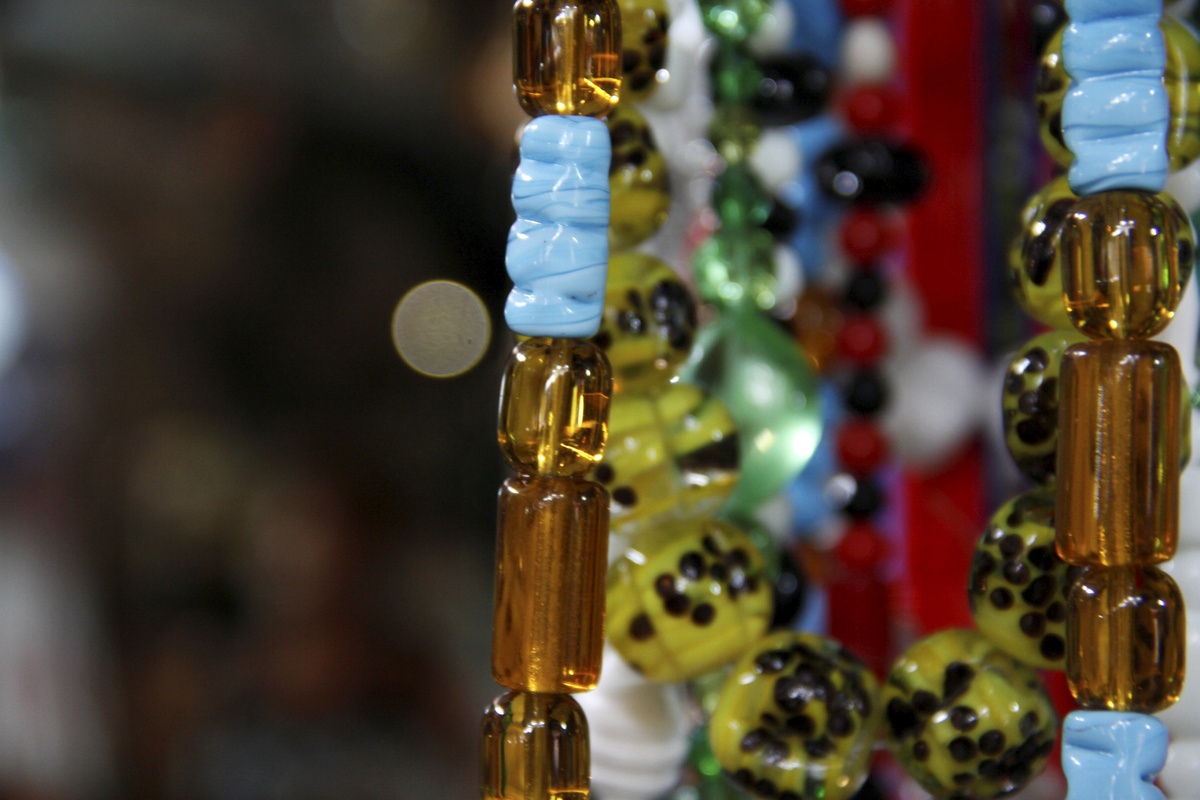
The Orixá Ogum is the supreme commander, a warrior who belongs to the Throne of the Law. To Ogum, we direct our requests for prosperity and protection, because he never abandons those who request him. Keep reading this article to know everything!
Origin and history
The origin and history of the Orixá Ogum is related to battles and victories. Once, Ogum was called to a war that had no foreseen end. So, when saying goodbye to his son, he asked that one day of the year be dedicated in his name while he was in battle.
On this day, the people should fast and be silent in his honor. Ogum spent seven years in this battle and when he returned, he knocked on many houses asking for food and drink, but no one answered him. Dominated by anger, he decimated the whole village with his sword.
When his son arrived, Ogum explained that the village should have received him with more consideration. What he did not know, however, was that it was precisely the day reserved for fasting and silence, in honor of Ogum. So, overcome by shame and remorse, he opened up the ground with his sword and buried himself standing up.
Visual characteristics
The Orixá Ogum is a strong warrior and always demonstrates bravery and courage. His colors are green, dark blue and red. Some images have his representation as a soldier wearing armor.
In religious syncretism, he is represented by Saint George, also very respected and admired. The Orixá Ogum is related to railroads and roads. These are the preferred places for the settlement of offerings dedicated to this entity.
The visual characteristics that define this highly respected Orixá are mainly the figure of a soldier who fearlessly wields his sword with bravery and courage. Ogum does not flee from any battle imposed upon him, nor does he ever leave a request unanswered.
Symbols and celebrations
The main symbol of the Orixá Ogum is the sword. He is the Lord of metallurgy and has dominion over iron, steel and all tools made with these materials, such as horseshoes, knives, hammers, spears, among others.
His color in Umbanda is red, and in Candomblé, green, dark blue and white. As in the syncretism of Afro-Brazilian religions, Ogum is associated with Saint George, and their celebrations are on the same day, April 23.
The day of the week dedicated to this entity is Tuesday, when fans can light candles and call for his protection and help to open paths.
Beliefs and prayer
In the Yoruba beliefs, Ogum is considered a great warrior. He is a fighter Orixá, who achieves his victories in a fair and honest way. Therefore, prayers made in his name have great power. The prayer below can be made for Ogum to open your paths:
Beloved Father Ogum by your power and by your Strength, I ask at this moment, for your order and for your righteousness.
And that from this moment forward I may, through your straight ways, grow in my work in a just and dignified manner and that all obstacles, difficulties and hindrances may be cut out of my paths, so that this work may bring sustenance to my home and all the people who depend on me.
Let his cloak cover me, let his spear be the direction of my path.
Ogunhê, my father Ogum!
Source:www.astrocentro.com.brOrixá Oxóssi
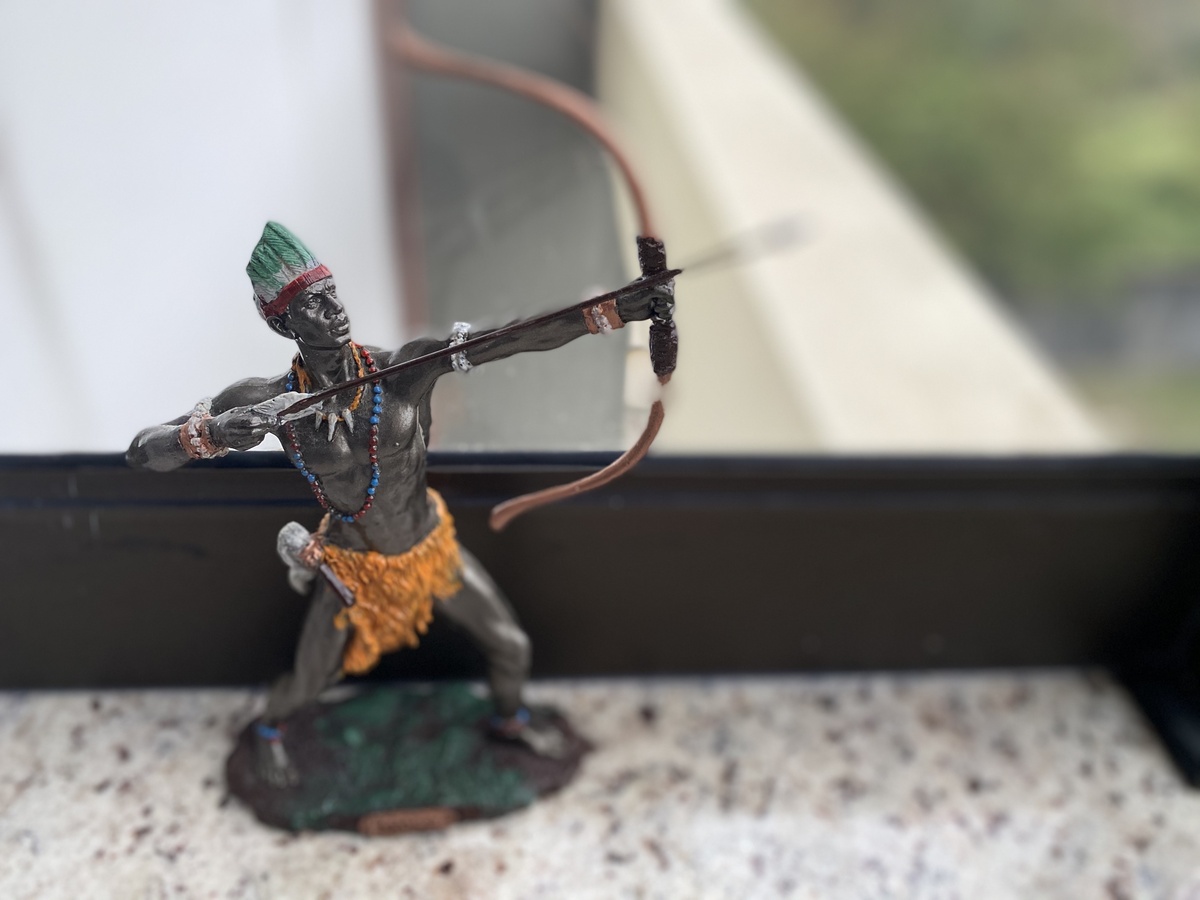
The Orixá Oxóssi is related to the energies of the forest. He is a skillful hunter who, with his bow and arrow, reaches his target with wisdom, because he does not waste opportunities. To learn more, continue reading!
Origin and history
The Orixá Oxóssi is the king of the forest, of the animals, of the food, of plenty and abundance. He is fast and cunning, as he has a peculiar way of catching his game. In the village where he lived, he was considered the protector of the hunters.
Oxóssi has as father the Orixá Oxalá and as mother, the Orixá Iemanjá. His name, which comes from the Yoruba, means "People's Guardian". He is the King of Ketu, because the legend says that, with a single arrow, he shot a bewitched bird of Eleyé. Thus, he broke the spell that harmed the population.
In the place where he was King, his cult was practically extinguished, due to the great difficulties that his people suffered. However, the root of this cult still lives in some places in Brazil, where the influence of religions of African matrix is quite strong.
Visual characteristics
Nature and the forests are the temple of the Orixá Oxóssi. He is also connected to knowledge and everything that belongs to nature, because he always praises everything that it can provide to supply humanity.
In ancient times, in African cultures, Oxóssi was always represented as a great hunter, responsible for bringing sustenance and protecting all hunters. Today, it is he who protects the workers who leave their homes to bring sustenance to their families.
His visual characteristics are related to his main activities. Thus, he is represented by a strong man, wearing a majestic headdress, his bow and arrow.
Symbols and celebrations
The symbols of the Orixá Oxóssi are: the Ofá - bow and arrow - and the Eruexim - ox tail. Besides that, there is also his headdress, which was given as a sign of recognition for his bravery, because only the great warriors could wear a headdress.
His appearance is of a great indigenous, endowed with an energy focused not only on strength, but also on intelligence and knowledge. His colors are green, dark blue and magenta.
In syncretism with the Catholic Church, Oxóssi is represented by Saint Sebastian, and his celebration is on January 20. Considered the Sultan of the forests, Lord Oxóssi may also be worshiped every Thursday.
Beliefs and prayer
According to African belief, Lord Oxóssi needs no more than an arrow to reach his target and for this reason he is called Otokan Soso. His perspicacity for hunting favors all who request it in the search for prosperity, employment and sustenance. The prayer below is a great way to connect with the immense strength and energy of this Orixá.
Pai Oxossi , king of the woods, owner of the forests OkÊ!
Strength and protection of your bush.
Guide my paths, giving the necessary wisdom.
May I not lack plenty and abundance in my home.
Let the daily bread be present in the same way as the fruits are part of your offering.
May I have the balm in my life according to all my needs.
Hail all the caboclos and caboclas of light.
Oke Oxossi!
Orixá Oxum
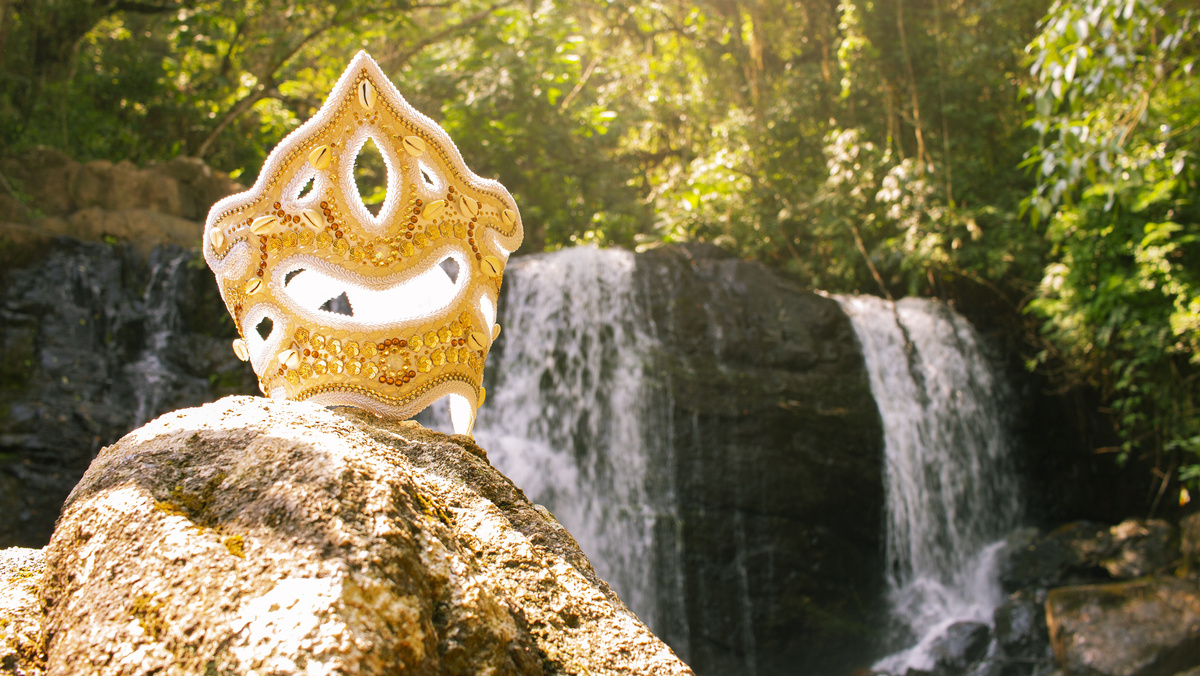
The Orixá Oxum is the queen of fresh water, owner of rivers and waterfalls. Goddess of beauty and gold, also represents the wisdom and feminine power. Learn all about this important Orixá below:
Origin and History
The Orixá Oxum, represents the sensitivity, feminine delicacy and tranquility of hearts in love. Her story tells that she was a curious girl, daughter of Oxalá, who since a little girl was interested in divination on the shells.
Only Ifá, the God of Divination, and Exu possessed the gift of reading the cowrie shells. Oxum questioned them about the possibility of learning the reading of destiny from the oracle, but both denied it. So she sought out the sorceresses of the forest, the Yámi Oroxongá, who took the opportunity to play a trick on Exu.
Thus, Oxum approached Exu, with a glittering powder in her hands, given to him by the sorceresses. Attracted by a joke of Oxum's, Exu fixed his eyes on her gaze, who blew the powder in his face, leaving him temporarily blind.
Concerned about the cowrie shells, Exu asked Oxum to help him recompose the game. Thus, gradually, all the Odus came to be known by her. Later, she was elevated to regent of the Oracle with Exu.
Visual characteristics
Oxum is the daughter of Oxalá and Iemanjá. She is represented as a slender, charming and sensual woman, always flaunting her charm, gracefulness and elegance. Oxum is the second wife of Xangô and is the Goddess of the river Oxum, which is located on the African continent, in Southwestern Nigeria.
The Goddess of Gold loves to be adorned by jewelry, perfumes and beautiful clothes, preferably in yellow or gold. Among her visual characteristics is her inseparable mirror, symbol of her vanity.
Oxum governs fertility and motherhood, as she is responsible for fetuses and newborn children. She is an Orixá worshiped and adored by women who wish to become pregnant.
Symbols and celebrations
Oxum is vain and likes to show off her gold jewelry. She is the goddess of fresh water - lakes, rivers, springs and waterfalls. Her symbols are related to magic and witchcraft. They are: the vulture, the mortar and the pestle.
She is known for her curiosity and determination and always gets everything she wants. This quality she transfers to her children, helping them when asked.
In religious syncretism, this Orixá was related to Nossa Senhora da Conceição and, in most Brazilian states, her celebration is on December 8 or October 12. The day of the week dedicated to her is Saturday.
Beliefs and prayer
Mother Oxum, as she is also affectionately called in African beliefs, is responsible for sheltering us during emotional storms. We can always count on her strength and energy to reassure us. To connect with this powerful Orixá, the prayer below is one of the best options:
Lady of the Waterfalls and Waterfalls
I make this "Prayer to Oxum" at the beginning of my day
So that the good spiritual vibrations of the "Lady of the Sweet Waters"
Be by my side all day long, Ora Yê Yê Ô!
Inspire my day with the gentleness and tranquility of still waters
For the blessing of your energy to bring health to my body, mind and spirit.
My "Sweet Mama Oxum" keep away from my paths those who wish to harm me,
Lady "Dona do Ouro", with her rich energy brings prosperity to my paths,
So that nothing will be lacking in my life and that of my family.
So that the good spiritual vibrations of the "Lady of the Sweet Waters"
Be by my side all day long, I pray to Oxum, Ora Yê Yê Ô!
Source:www.iquilibrio.comOrixá Oxumaré

The Orixá Oxumaré represents the rainbow snake and, just like the snake, brings its main characteristics. Mobility, agility and dexterity are just some of them. Keep reading this article to know everything about this Orixá!
Origin and history
The most beautiful story about the origin of the Orixá Oxumaré is the one that relates its representation to the rainbow. Oxumaré, because of his wisdom and dexterity, was called Babalaô, which means "Father of all secrets.
During a period, he rendered services to the King of Ifé, who remunerated him with crumbs, for he considered it an honor to render services to him. Thus, Oxumaré should be grateful for the imperative opportunity.
But the king demanded a lot from him, and Oxumaré did not have time to perform other works and was in need of many things. That is when he decided to consult Ifá, to be advised on the best way to proceed. When the king found out about this, he considered it a great ingratitude and dismissed Oxumaré's services.
Olokun Seniade was, at that time, looking for a Babalaô who could guide her to have children. She had already made several attempts, with several Babalaôs, without success. However, Oxumaré was assertive in his guidance and, soon, Olokun fulfilled her wish.
As thanks, she gave him the most precious thing she had: money seeds and a beautiful colored cloth, whose colors would spread across the sky, forming a rainbow, whenever Oxumaré wore it.
Visual characteristics
The Orixá Oxumaré is represented by a man who is the mediator between heaven and earth. He is transformation, besides being responsible for the movements of the earthly cycles. Without him the world would end, because this Orixá represents the main movements of the earth.
Its abode is the sky, and its travels to Earth are through the rainbow. Among its visual characteristics is its resemblance to a snake, which surrounds the planet, ensuring its renewal through its cycles.
Moreover, this Orixà is masculine, but has an ambiguous energy, representing also the feminine, which guarantees the perpetuation of life. Thus, Oxumaré belongs to the water and to the earth.
Symbols and celebrations
Orixá Oxumaré has as main symbols the serpent and the rainbow. He shows himself as a great serpent that bites its own tail and surrounds the earth, forming a closed circle. He helps us to transform our life.
Therefore, every time we feel the need to renew our life through better choices, we should activate the energy of this Orixà. Affective, professional and financial matters can be restored.
Oxumaré, in religious syncretism, is represented by Saint Bartholomew. The date of his celebrations is August 24, and the day of the week dedicated to him is Tuesday.
Beliefs and prayer
In the main beliefs, Oxumaré is the Orixá that walks between heaven and earth as a rainbow. He helps us, bringing abundance, abundance and healing for all our imbalances. Through the prayer below, we can connect with this Orixá, to ask him to end the painful cycles, bringing joy and new beginnings in our lives.
Arroboboi Oxumarê! Cobra Orixá, Lord of the Rainbow, of the riches of the world, responsible for the renewal of the cycles of this world!
Serpent of Wisdom, break the bad and harmful cycles in my life; purify my spirit so that I may find progress in my spiritual and personal journey; and set me in the direction of healthier and more prosperous paths for my life and for my spiritual growth.
I ask you, Father, for your blessing that wealth, prosperity and success accompany me wherever I go! May I always be worthy to be under your protection.
Enlighten me, Sacred Rainbow, with your renewing power of life; ridding me of enemies, false friends, and evil and envious people and their intrigues; and put in my paths the sincere friendships and true feelings that will bring me growth and harmony!
Arroboboi Oxumarê!
Source:www.raizesespirituais.com.brOrixá Xangô
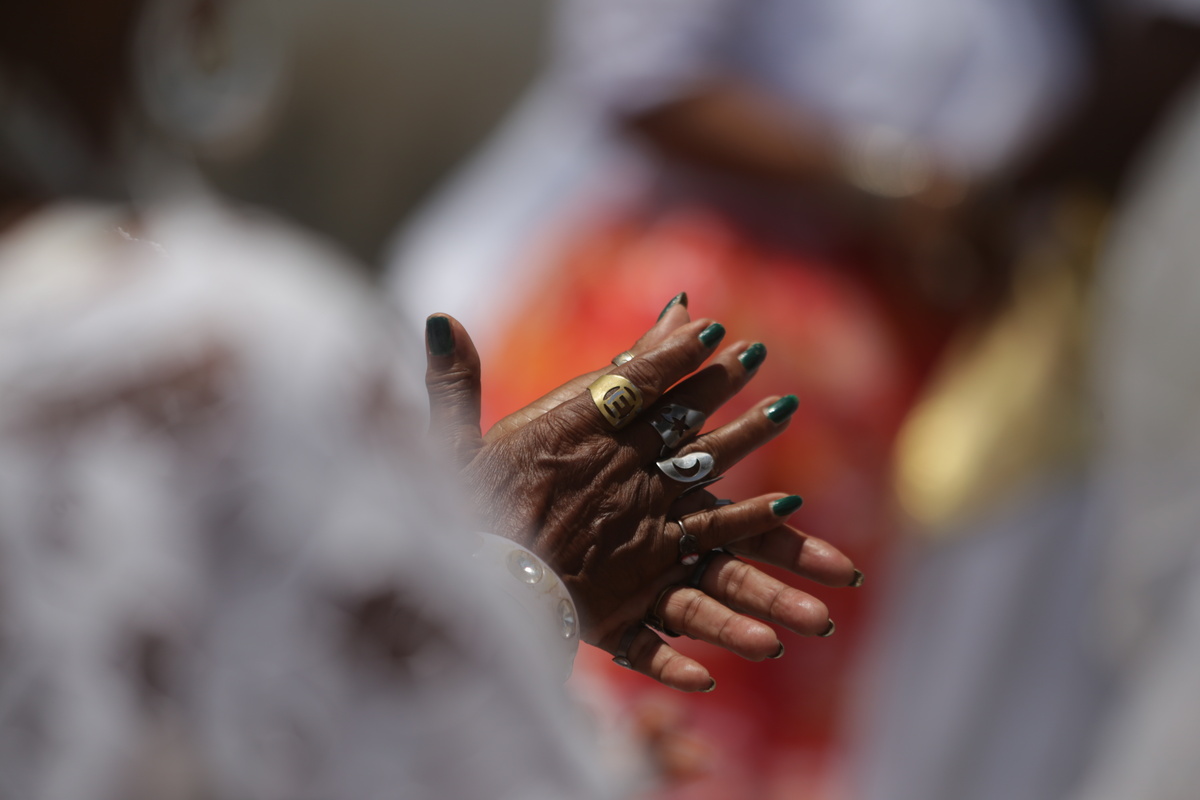
Xangô is considered the Orixá of justice, lightning, thunder and fire. He is the master of wisdom, worshipped with extreme respect. Read on to learn more!
Origin and history
The Orixá Xangô is the son of Oraniã and Torossi, and was married to various women. The most well known are: Oiá, Oxum and Obá. Xangô punishes liars, thieves and evildoers. His origin and history reflect his great sense of justice.
There was a time when his opponents were given express orders to destroy his entire army. Shango and his followers were losing the battle and gradually being executed. On one occasion, Shango felt that he should meditate and reflect on the events.
Then he went to the top of a quarry to think of new strategies to defeat his enemies. Seeing the immense sadness of everyone, he was seized by an intense rage. With a quick movement, he struck a rock with his hammer, which generated sparks as strong as a catastrophe. Then he continued to strike harder and harder, triumphing over his enemies.
Visual characteristics
Xangô's main visual characteristics are his own beauty and sensuality. A very handsome, charming and vain man who was hotly contested by three of the most powerful Orixás.
The Orixá Xangô, has control over lightning and thunder, and also expels fire from his mouth. He has a warrior inclination, for, with his two-faced axe, he has commanded and won many battles.
Masculine, virile, aggressive, violent, but very just. This Orixà acts energetically based on Divine Justice, the one that considers the actions of your soul, independent of this incarnation. In other words, previous lives are also analyzed.
Symbols and celebrations
Xangô is the Lord of Justice, and the colors that represent him are red, brown and white. His main symbol is the Oxé, a weapon in the shape of a double axe.
In religious syncretism, Xangô is represented by Saint Jerônimo, the Catholic saint responsible for translating the Holy Bible into Latin. That is, we can consider that he was the one who wrote the Laws of God, so there is the association with Xangô, the Orixá of Justice.
The celebrations for the Orixá Xangô occur annually on September 30. He is remembered by his followers every Wednesday.
Beliefs and prayer
The Orixá Xangô is at the head of Divine Justice. Whenever you feel unjustly treated, attach yourself to the energies of this divinity. Use prayers as sacred instruments and count on Xangô to resolve situations of injustice and open new paths.
Lord my Father, infinity is your great abode in space, your point of energy is in the stones of waterfalls.
With your justice you have made a building worthy of a king.
My Father Xangô, you who are defender of the justice of God and of men, of the living and of those beyond death, you, with your golden hatchet, defend me from injustices, shielding me from the evils, from debts, from the malicious persecutors.
Protect me my glorious Saint Jude Thaddeus, Father Xangô in Umbanda.
Always justiciar in the paths where I come to pass with the strength of this prayer, I will always be with you, delivering me from despair and pain, from enemies and envious, from individuals of bad character and false friends.
Axé.
Source:www.astrocentro.com.brOrixá Iemanjá
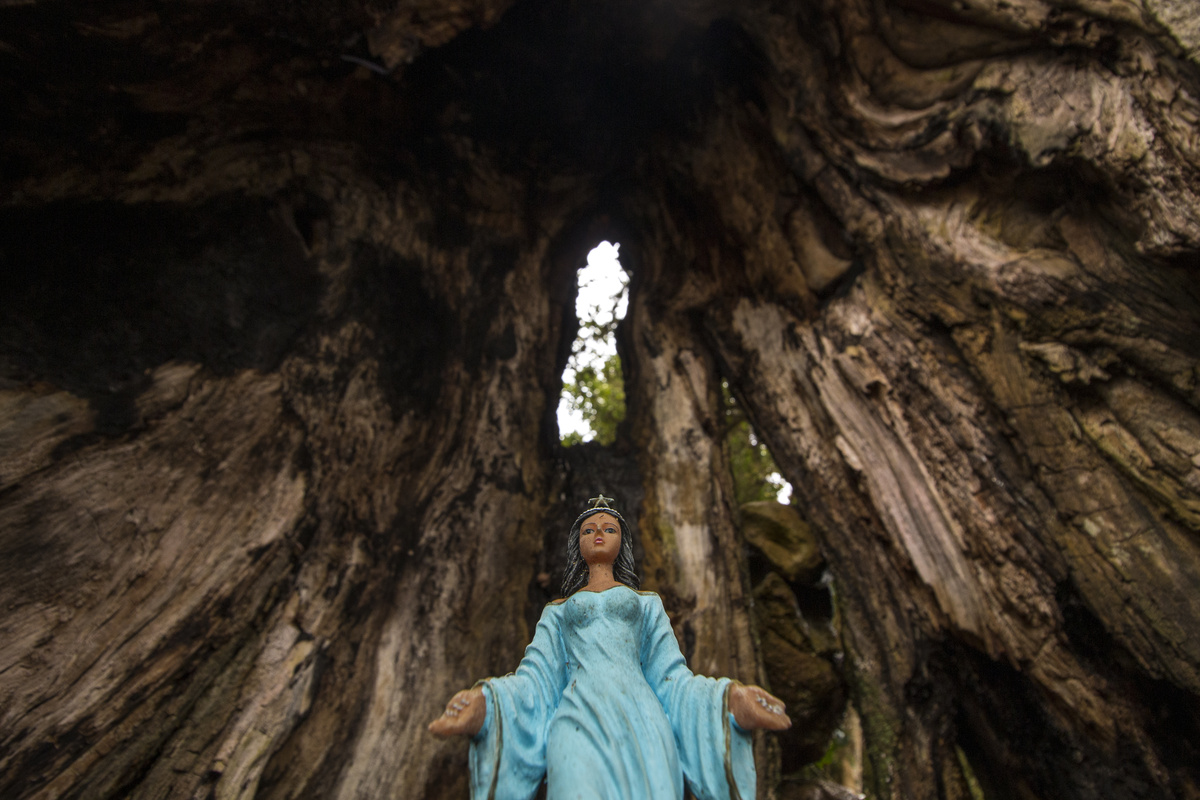
She is the Queen of the Sea, Iemanjá, the mother of virtually all orixás has been exalted by people of all races and religions. Learn all about this Orixá below!
Origin and history
The name Iemanjá means the mother of the children-fish. In fact, she has several names: Sea Mermaid, Princess of the Sea, Inaé, Dandalunda. She is the daughter of Olokum and was married to Oduduá, with whom she had ten orixá children.
Because she breastfed them, her breasts became enormous, which made her very sad because she was used as a joke by her husband. She was unhappy in this marriage, because the man made fun of her breasts. This made her leave and look for other options for happiness.
It was then that she met Okerê, who married her under the promise of never making fun of her breasts. Unfortunately, this promise lasted until the day he was drunk and made mean comments. Saddened, she ran away.
Since she was a little girl, she carried a potion given to her by her father to be used in cases of danger. During her escape, this potion broke and the powder turned into a river that headed towards the sea. Okerê then turned into a mountain to block the course of the waters, because he did not want to lose her.
Iemanjá asked for help from her son, Xangô, who, with a bolt of lightning, split the mountain in half, allowing the waters to pass through and flow into the ocean. Thus, she became the Queen of the Sea.
Visual characteristics
The Orixá Iemanjá governs the cycles of nature linked to water and characterizes the changes, to which all women are subjected due to the influences of the cycles of the moon.
She is known by most, for the representation of a beautiful woman, always dressed in sea blue. We can ask her luck in love, protection, health and help to be a mother. Her image is the stereotype of female beauty: Long black hair, delicate features, statuesque body and very vain.
Symbols and celebrations
The symbols of Yemanjá are seashells and sea stones, silver abebé, alfanje, agadá (sword), obé (sword), fish, breastplate, adé (crown with fringe and beads) and ides (bracelets or ring bracelets).
In the religious syncretism, Iemanjá is related to some saints. In the Catholic Church, she is Our Lady of Candeias, Our Lady of Navegantes, Our Lady of Conception, Our Lady of Piety and the Virgin Mary.
In addition, the dates of the celebrations dedicated to this Orixá are different. In Rio de Janeiro, her cult is celebrated on December 31st. In Bahia, her date is celebrated on the day of Our Lady of Candeias, February 2nd.
Beliefs and prayer
The Orixá Iemanjá is respected by many, especially by fishermen and all those who live on the sea. In her belief, it is she who decides the fate of people who enter her empire. Through this prayer, ask her for protection and opening of paths:
Divine Mother, protector of fishermen and ruler of mankind, give us protection.
Oh, sweet Yemanja, cleanse our auras, deliver us from all temptations.
You are the force of nature, beautiful goddess of love and goodness (make request).
Help us by unloading our matters of all impurities and may your phalanx protect us, giving us health and peace.
May your will be done.
Odoyá!
Source:www.dci.com.brOrixá Iansã
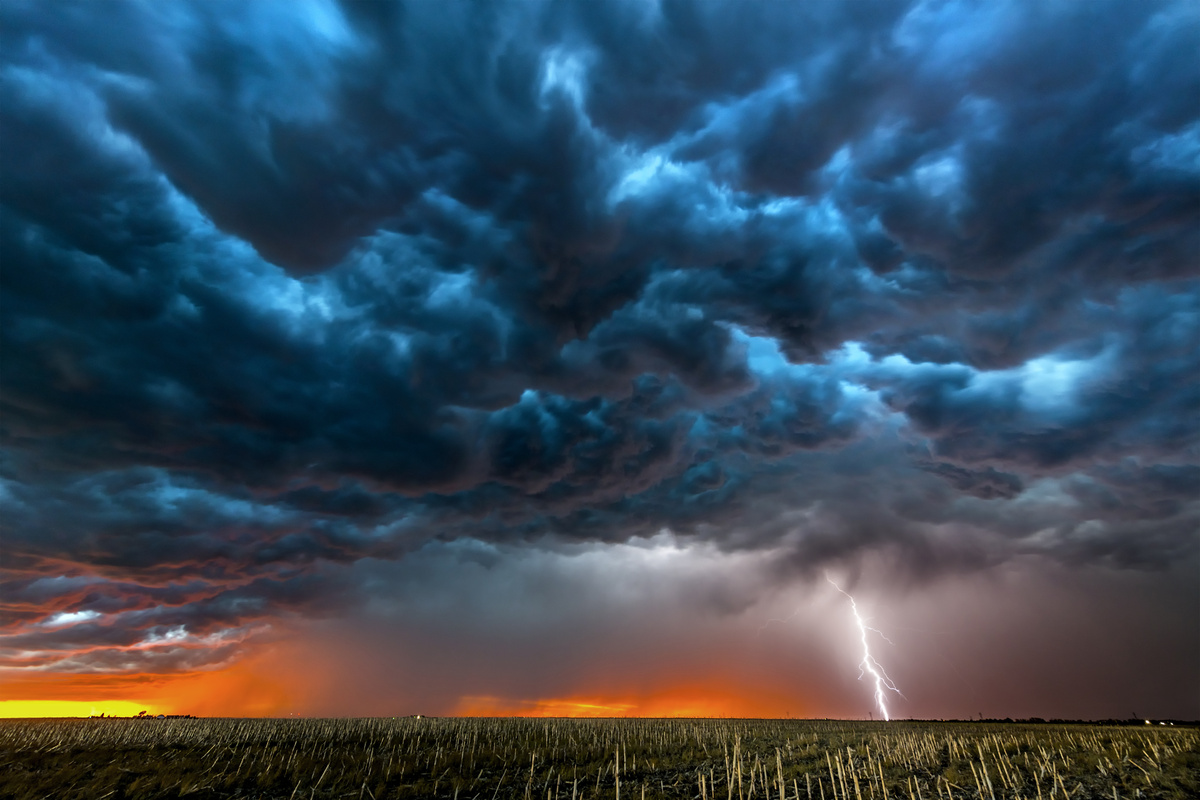
Iansã rules the lightning, storms and commands the spirits of the dead. The Orixá represents movement, fire, the need for change. Read on to learn more about her!
Origin and history
The Orixá Iansã, in her youth, traveled to various kingdoms in search of learning. On these trips, she won the heart of many kings, including Exu, Oxóssi, Ogum and Logun_Edé. Intelligent and strategic, she managed to live and learn with all her suitors.
With Ogum, he learned how to handle the sword; with Oxaguian, he learned how to use the shield; with Exu, about fire and magic; with Logun-edé, he learned how to fish; with Obaluaê, he learned how to deal with the dead.
As she continued her journey toward the kingdom of Xangô, she learned to truly love, for she fell intensely in love with this Orixá, who gave her his heart and taught her to master the powers of lightning.
Visual characteristics
Iansã has her strength linked to the participation in various wars in the domain of winds, thunder and storms. She stands out by showing that she possesses skills and behaviors typically masculine. She has the claw and strength of a warrior.
Her visual characteristics are striking, as she wears red or yellow. The Orixá Iansã is very different from the central female figures of Umbanda, as she is not as feminine as the others.
In addition, Iansã is very sensual and is always in love, but she is careful not to have more than one partner at the same time. She has the energy of transmutation, which propels us towards whatever new may arise.
Symbols and celebrations
The name Iansã is a title that Oiá received from Xangô, which makes reference to the sunset. It means the mother of the pink sky or the mother of the sunset.
Her most well-known symbols are the ox horn, the sword of fire and the eruexin. The latter is a liturgical instrument, made with a horse's tail. Through this tool, she leads the path that establishes this contact between those who have already died.
Beliefs and prayer
Iansã has dominion over the winds and all natural phenomena such as hurricane, rain and lightning. In religious syncretism, she is compared to Santa Barbara. Her celebration happens on December 4th. It is through prayers like the one below that we can connect to the fulfilling energy of this Orixá:
O glorious warrior Mother, mistress of the storms,
Protect me and my family from evil spirits,
So they don't have the strength to stand in my way,
And don't let them take my light.
Help me so that evil-intentioned people
Don't destroy my peace of mind.
Mother Iansã, cover me with your sacred mantle,
And carry with the force of its winds all that is no good far away.
Help me in the unity of my family, so that envy
Do not destroy the love that is in our hearts.
Mother Iansã, in you I believe, hope and trust!
So be it and so shall it be!
Source:www.portaloracao.comOrixá Nanã
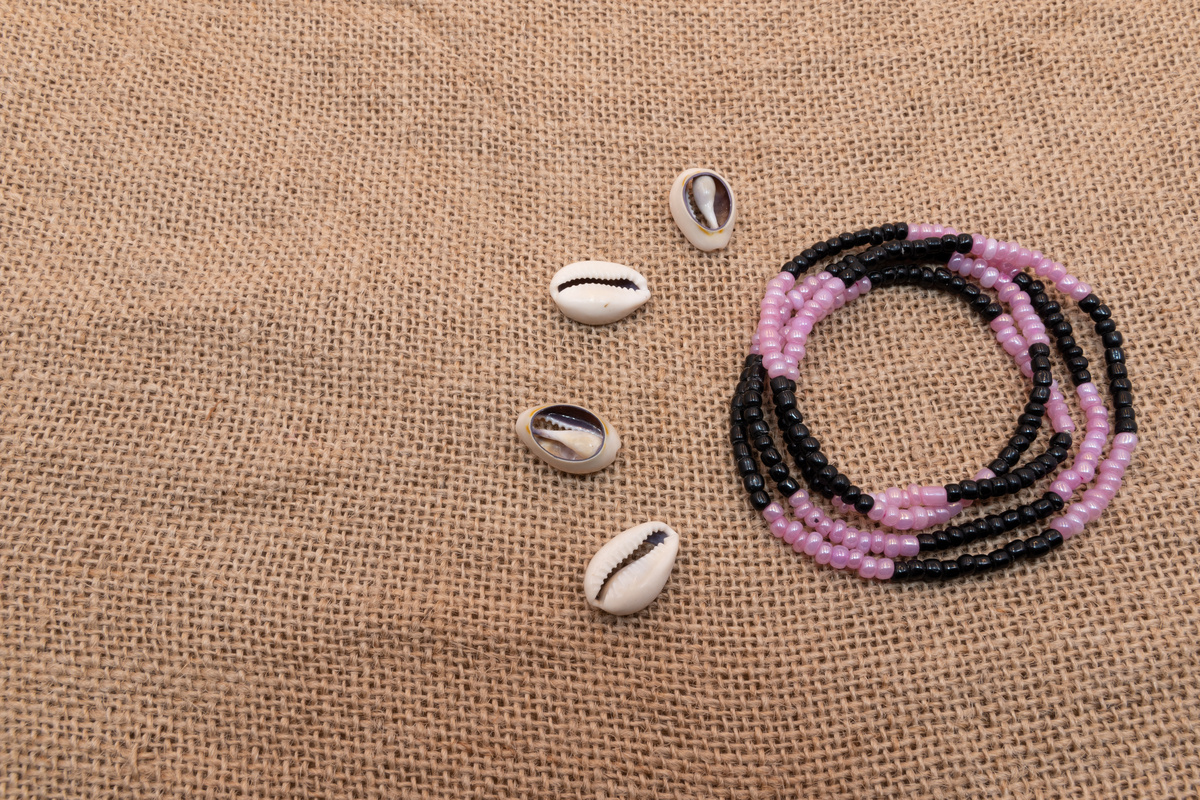
The Orixá Nanã is very important in the pantheon of African religions. This orixá is related to the origin of man on Earth. Continue reading this article to learn all about her!
Origin and history
Nanã is known as the elder of the African pantheon. She has been present since the creation of humanity, as she experienced all the magic of the conception of the universe. Owner of the portals of life and death, she cleanses the minds of spirits and helps them when they are ending their journey on Earth.
There are some stories involving Nanã. One of them tells that, to punish criminals, she invoked Eguns to scare them. When Oxalá learned of this power, he decided to bewitch her with a portion of love, so that she would agree to marry him.
The spell worked, and Oxalá who, in truth, only wanted to know how to evoke the Eguns, discovered how to enter the Garden of the Dead, disguised himself with Nanã's clothes and ordered the Eguns to obey the man who lived with her. Thus, he began to lead the Eguns.
Visual characteristics
The Orixá Nanã is the oldest of the African pantheon, she is the grandmother and presents herself as a slow old woman with a curved walk. Her dance shows her age, as she rests on an imaginary stick. She is always dressed in ample lilac or blue clothing.
Besides, she is an aggressive warrior, descendant of Ifé. She lives in the fresh waters and in the swamps. It is her relationship with the clay that places this deity in the existing domains of the universe. Feared by all, she is defender of the forests and is related to death and the afterlife, as many beings are routed through her.
Symbols and celebrations
Among the various symbols used by Nanã, is the Ibiri, an instrument made from the sticks of the palm tree, which represents the multitude of Eguns, considered to be her children on Earth. Nanã treats them with great affection, for she is aware of the need for their evolution.
Moreover, the conch are also considered symbols of Nanã, since they symbolize death and fecundity. In religious synchronism, Nanã is related to Santa Ana, grandmother of Jesus. The celebration occurs for both on July 26, and Monday is the day dedicated to this deity.
Beliefs and prayer
The Orixá Nanã is considered the mother of men. It was she who provided the clay, while Oxalá gave the breath of life. She is the Orixá that represents maternal love, and the prayers directed to her should be for the benefit of life:
Divine Mother Nanã,
Lady of the still waters of the lakes,
Quiet the hearts of Thy children who walk in affliction,
Teaching us patience, to seek perseverance
And to know how to wait for the Light of tomorrow.
Mother, Stretch over us Your Sacred Mantle of water and earth
Who collects all impurities And our anguish and sorrows;
Purifies and transmutes our feelings and innermost thoughts
That stubbornly hide from reason, creating dark swamps in our hearts.
May Thy still waters truly wash our souls,
Our innermost, our most hidden will, and decant all that is not of the Light,
Awakening all those afflicted by the Sacred Magic of the Mystery of the Cross.
Salubá Nanã!
Source:www.raizesespirituais.com.brOrixá Omolú
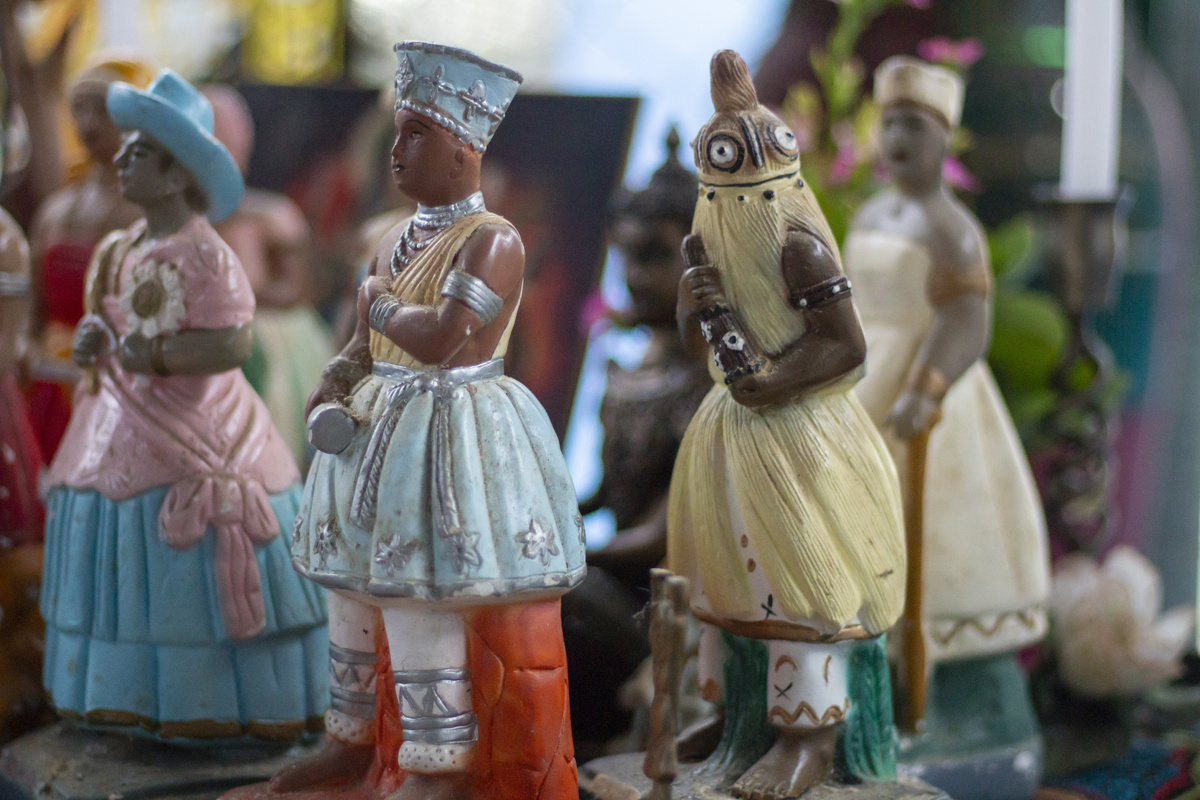
The Orixá Omolú, also known as Obaluaê, has the power to dominate the territories of healing and illness. He carries in his body several wounds due to smallpox. To know everything about this deity, keep reading this article!
Origin and history
The marriage of Nanã and Oxalá did not represent a happy union, but in spite of this, the Orixá Omolu was born. Due to errors committed by Nanã, when confronting Oxalá, the boy was born full of smallpox, which caused his mother to abandon him to die by the sea.
Iemanjá, when walking over her domains, found the newborn child, all deformed due to illness. In addition, crabs were already eating part of his little body. She immediately adopted him and taught him how to overcome illnesses and cure diseases.
So, Orixá Obaluae grew up with a body full of scars, which always caused him a lot of shame, leading him to cover himself with straw to hide. Only his arms and legs were left out.
Visual characteristics
Obaluaê has a great size and is always dressed in Filá and Azé, which are clothes made of straw. He has an intense glow like the sun, and any human who saw him could die instantly, such is the brightness emanated by him.
His posture is curved, as if he carried all the pains of the world. Covered completely by the straw that also hides his marks, he is linked to the evolution of human beings, for being the orixá responsible for the passages from the world of the dead to that of the living and vice-versa.
Besides that, Obaluaê radiates a very positive violet energy, which transforms all negative feelings into positive ones, transmuting all shadows within each one of us.
Symbols and celebrations
Omolu's main symbol is his own garment made of straw, covering his entire body. He always carries a wooden spear because, when human, he was a warrior.
He also always carries a small gourd with spells to give to sick people and a xaxará (Sàsàrà), a kind of hand scepter, made of palm fronds and decorated with conch and beads.
The Orixá Omolu is syncretized with São Roque, a saint of the Catholic Church, patron saint of the sick, plague victims and of surgeons. The day of his celebration is August 16, and the day of the week is Monday.
Beliefs and prayer
Nothing can be hidden from the Orixá Obaluaê, because he is able to see all the details of a person's life, even the biggest secrets. His energies can be used to end situations that do not do us good, starting a new life. Check out his prayer below:
Hail to the Lord, the King of the Earth!
Umbanda Doctor, Lord of the Healing of all ills of body and soul.
Father of wealth and bliss, in you I commend my pains and sorrows, asking you for the blessings of health, peace, love and prosperity for my life;
Make me, Lord of work; a warrior son of good cheer, with health, love, firmness and disposition, to triumph in the struggle for survival.
Make and let my father, Omulú, that I may be worthy to deserve every day and every night, your blessings of sunlight and mercy.
Prayers to Atotô my father!
Prayer to Atotô Obaluaiê!
Source://oracaoja.com.brOrixá Logunedé
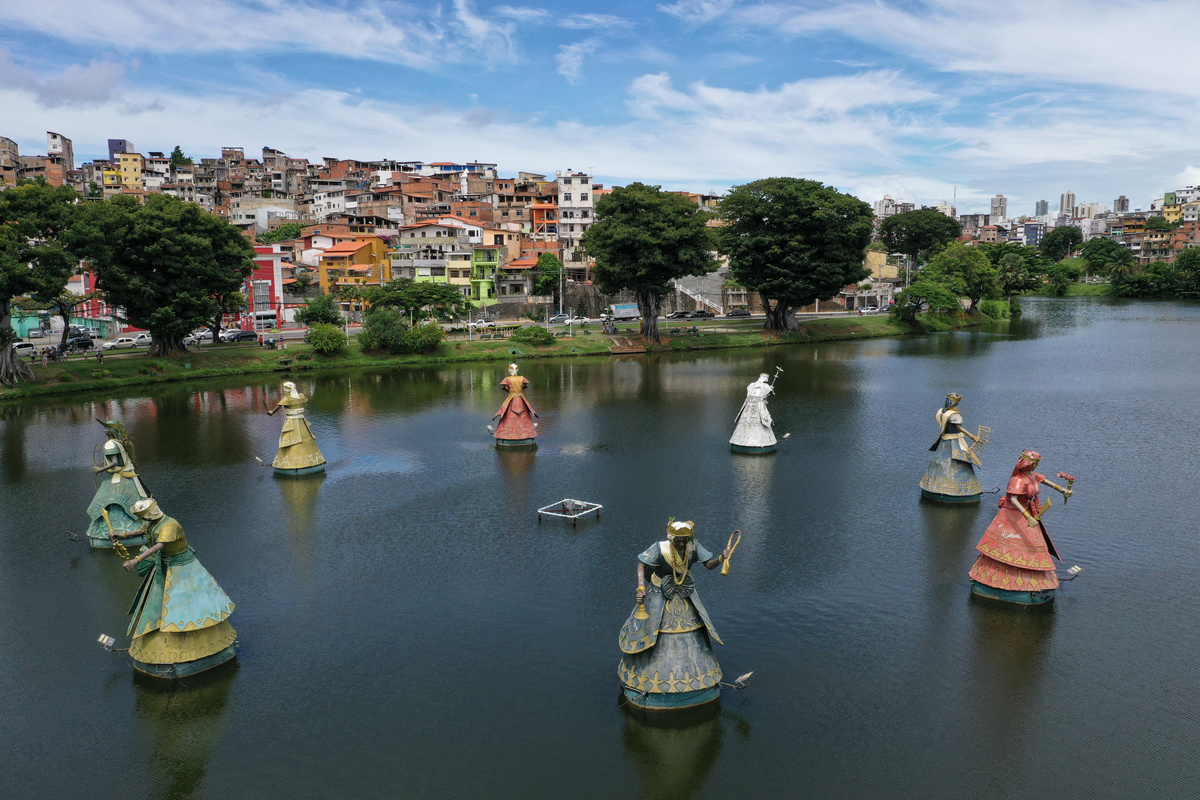
Logunedé, or Logun Edé, is the son of Oxum and Odé. He is the Orixá of wealth and abundance, God of war and water. Read this article until the end to learn more about this beautiful Orixá!
Origin and history
Logun Edé is considered the Orixá of the rivers and the Lord of Fishing, being simultaneously a fisherman and a hunter. Son of Oxum and Odé, he carries in himself the energies of his parents, besides his own.
He learned his knowledge and mastery of nature from his parents, as he spends six months hunting with his father and six months in fresh water with his mother, Oxum. This makes many consider that this Orixá has feminine and masculine polarity, which is not true, because this deity is masculine.
From his father, Odé, he inherited joy and expansion, added to the axes of knowledge, hunting, skill and abundance. Grace and gentleness are left over from Oxum, who also rewarded him with the axes of sexuality, maternity, prosperity and research.
Visual characteristics
The Orixá Logunedé is, without a doubt, the most elegant of all. He is vain and abuses of the color gold in accessories such as bracelets and necklaces. His clothes are adorned with skins of wild animals he hunts.
Because he is a skilled hunter, when he is on dry land, he feeds on game, and when he is underwater, on fish. He has mastery over the power of mutation, which allows him to transform into whatever he wants.
His visual characteristics are related to the genetic inheritance received from his parents. The union of the feminine of Oxum and the masculine of Odé often causes him to be represented as a child or adolescent.
Symbols and celebrations
The Orixá Logun Edé belongs to the pantheon of hunters. Representing wealth and abundance, he can have various symbols. Among them are the Balance, the Ofá, Abebè and the Seahorse. Due to his capacity for camouflage, his main symbol is the chameleon.
In religious syncretism, Logun Edé is related to Saint Expedito and Saint Michael the Archangel. The date of the annual celebrations is April 19, the day in which the Catholic Saint is honored. The day of the week chosen for the celebrations of this Orixá is Thursday.
Beliefs and prayer
Logun Edé can move between various energies because he has a lot of knowledge and freedom to direct himself towards nature. Therefore, he is not tied to only one personality or one gender. When we connect with Logun Edé, we can ask for prosperity and protection through his prayer:
Child god, Logun Edé, lord of play and constant joy.
Child god of the blessings of life and the shimmering earth.
Child god of abebé and ifá may your attention fall on me.
Boy god of gold, of rainbow stones.
Boy god of the bow and arrow who points the destination.
Child god of prosperity. Child king of goodness.
Child God watches over my steps.
Child God take me into his arms.
Child God, Lord of the World, Lord of Hope, guide my steps, under your yellow and green mantle.
Saravá Logun Edé!
Source:www.mensagenscomamor.comThe orixás are deities of the Yoruba African mythology!
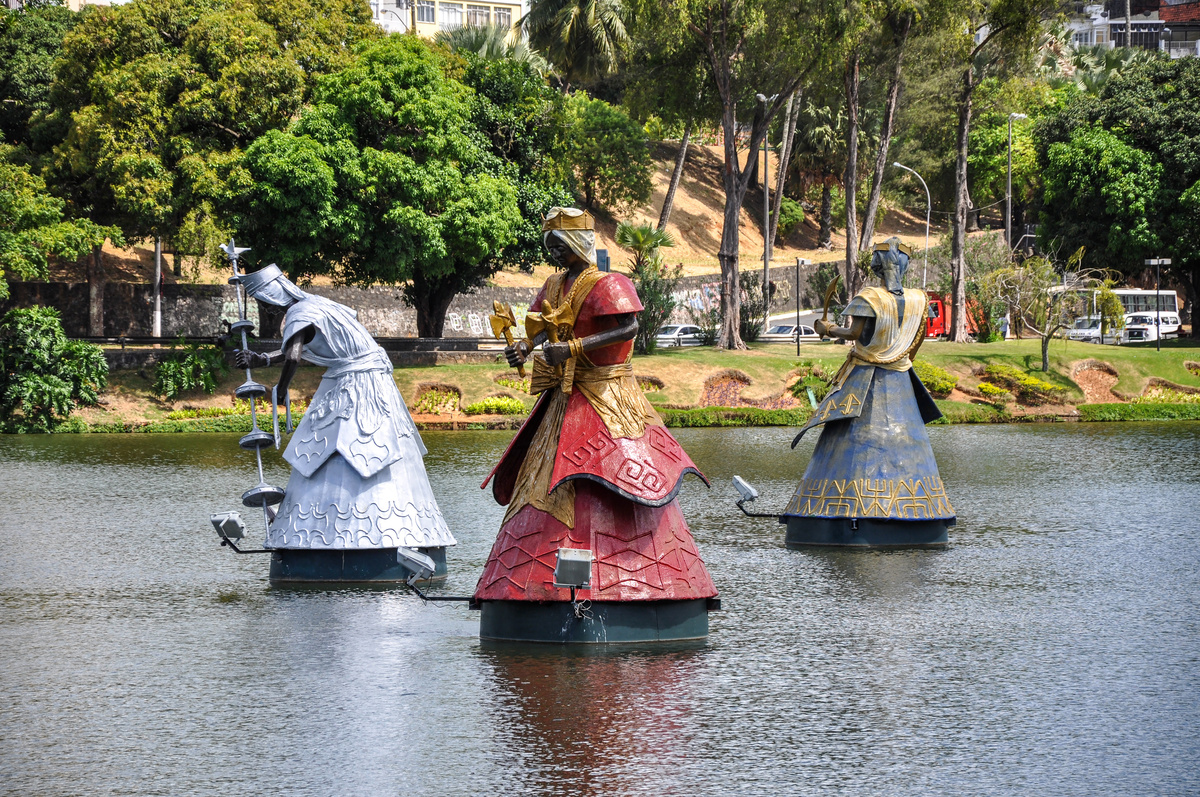
In Brazil, the figure of the Orixás is already part of the imaginary and practical life of many people. These divinities belong to the Iorubá African mythology and, as far as we know, there are around 400 beings.
The Yoruba region is in Africa, composed of several ethnic groups with similar language and culture. Most blacks brought to Brazil as slaves were from this region. When they were transported here, they did not separate themselves from their religious beliefs.
The original cult of these Orixás started to be practiced by these enslaved people, but this practice was never well seen by the colonizers, who wanted Catholicism to become the official religion of Brazil. For a long time, these Orixás were worshipped in secret.
Today, it is wise to state that some of these deities are especially respected and honored in Brazil. Therefore, much is due to religious syncretism, which made them popular and kept them functioning.

